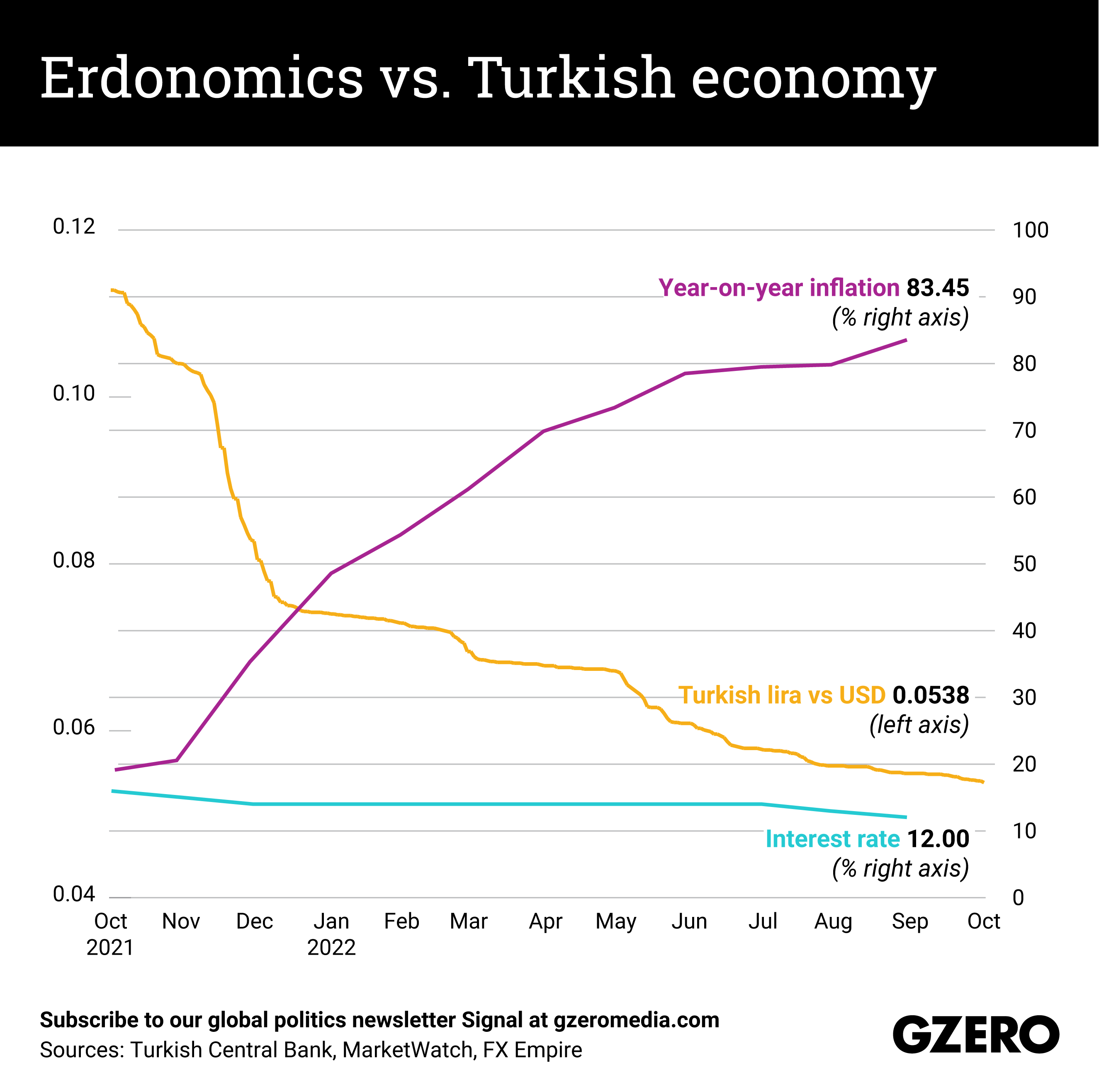October 06, 2022
This week, Turkey’s annual inflation rate reached 83.45%, a 24-year high. And that's just the official number — independent experts believe the actual figure is more than 186%, which means prices have almost tripled.
Yet President Recep Tayyip Erdoğan doesn't seem to be bothered by sky-high inflation, insisting he has the magic formula for Turkey's economy to grow out of the problem: continue to defy economic orthodoxy by keeping interest rates low. Now they’re at 12%, but if you factor in inflation, the real rate is minus 68%, which means that cash is burning a hole in the wallets of Turkish banks.
Erdonomics is all about putting growth above stability. If Turkey makes it easier to borrow money to invest, do business, and create jobs, GDP will expand at a faster rate than prices are rising.
To be fair, Turkey's economy is indeed growing, to the tune of a robust 7.6% year-on-year in the second quarter of 2022. That’s 0.3 percentage points more than in the first three months of the year.
Is it growing enough? Nope, according to pretty much any economist not on the president's payroll. Erdoğan’s ultra-loose monetary policy, experts argue, is killing the economy.
Another big problem is that Erdonomics has made the local currency nosedive against the US dollar. The greenback is very strong this year, true, but Turks and foreign investors would rather save or spend dollars on imports and stock up on worthless liras. Turkey also has $182 billion worth of debt it needs to pay back by April 2023, putting even more pressure on the lira.
Still, Erdoğan won't let Erdonomics go because he has an election coming up. When Turks go to the polls next year, the president hopes that if the economy keeps growing and inflation somewhat tapers off, re-election is all but assured. But that's a big if — and a major gamble for Turkey's strongman leader.
(Also, here's a fun take on Erdonomics by ... Erdoğan himself.)This article comes to you from the Signal newsletter team of GZERO Media. Sign up today.
More For You
Mastercard Economic Institute's Outlook 2026 explores the forces redefining global business. Tariffs, technology, and transformation define an adaptive economy for the year ahead. Expect moderate growth amid easing inflation, evolving fiscal policies, and rapid AI adoption, driving productivity. Digital transformation for SMEs and shifts in trade and consumer behavior will shape strategies worldwide. Stay ahead with insights to help navigate complexity and seize emerging opportunities. Learn more here.
Most Popular
- YouTube
Despite a ceasefire in Gaza, Israel is still not letting foreign journalists in to independently verify what’s happening on the ground, CNN’s Clarissa Ward tells Ian Bremmer on GZERO World.
- YouTube
On Ask Ian, Ian Bremmer breaks down the steady escalation of US pressure on Venezuela and why direct military action is now a real possibility.
US President Donald Trump arrives to announce reciprocal tariffs against US trading partners in the Rose Garden of the White House in Washington, DC, USA, on April 2, 2025.
POOL via CNP/INSTARimages.com
From civil conflicts to trade wars to the rise of new technologies, GZERO runs through the stories that have shaped this year in geopolitics.
© 2025 GZERO Media. All Rights Reserved | A Eurasia Group media company.
